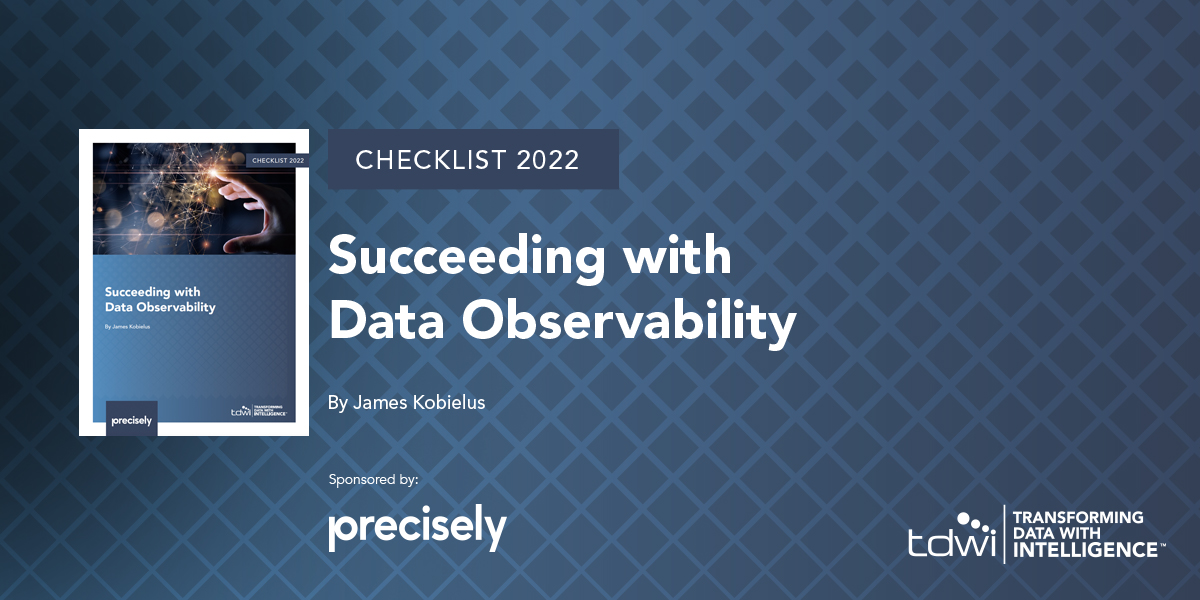Analyst Report
TDWI Checklist Report: Succeeding with Data Observability
Succeeding in modern business requires comprehensive visibility into your data’s quality and into the health of your enterprise’s processes for ingesting, transforming, cleansing, and delivering it into production applications.
Data observability is an essential capability for keeping data fit for use and for ensuring the continued availability, reliability, efficiency, and performance of your operational data pipeline. It allows organizations to continuously track, assess, manage, and optimize the health of their data. Operational monitoring makes organization aware of the state of their data while it is transforming and moving through pipelines.
This TDWI Checklist discusses five best practices for using observability tools to monitor, manage, and optimize operational data pipelines. It provides strategic guidance for enterprise data leaders in defining the core metrics of data quality and pipeline health, converging observability silos across data domains, unifying monitoring data and the pipelines through which it’s processed, delivering actionable observability to data management stakeholders, and scaling and automating enterprise data observability.
1. Define core data quality and pipeline metrics
2. Consolidate data observability silos across domains
3. Unify monitoring of enterprise data and its pipeline
4. Deliver actionable observability to stakeholders
5. Scale and automate data observability
To learn as to why organizations should make data observability part of their data management practice, read this TDWI Checklist for Data Observability Report.
